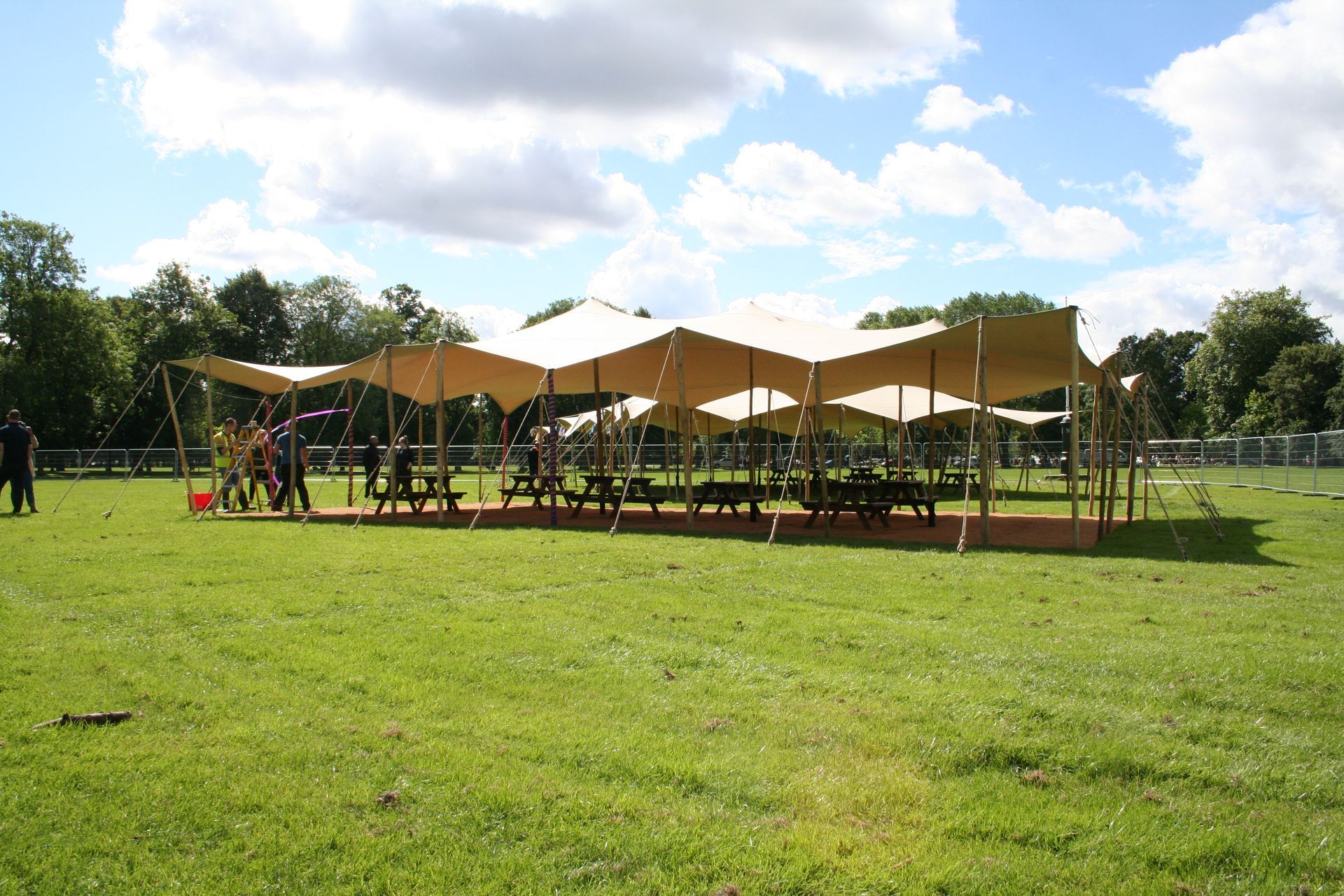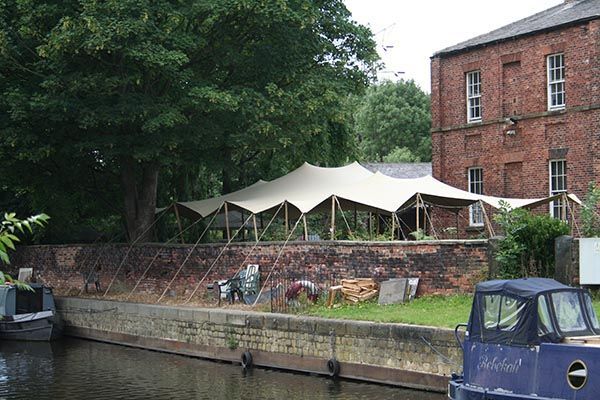STRETCH TENTS ON HARDSTANDING
Typically stretch tents are secured using long stakes or pegs hit into the ground. It is possible to set a stretch tent up like this on hardstanding. With enough force we can pierce through tarmaccadam/asphalt surfaces. For harder ground such as concrete we can drill holes and use eyelet rawlbolts or shorter pegs. However this does end up leaving a hole in the ground which often isnt allowed by the landowners. When we aren’t allowed to peg into the ground to secure our stretch tents we often use ballast (otherwise known as weights).
Its surprising the quantity of ballast needed to secure a stretch tent. To give a full wind loading of 100kmph for one of our smaller 7.5x10.5m RHI brand stretch tents a whopping 44 tonnes of ballast is needed. For a 21x15m stretch tent its 74 tonnes of ballast needed for a full wind loading. On the lower end of the stretch tent wind loading spectrum we can set up a 7.5x10.5m with as little as 26 tonnes for a 21x15m stretch tent (giving a 55kmph wind loading rating) or 16 tonnes for a 7.5x10.5m stretch tent. It really shows how much force the pegs we usually use to secure our stretch tents can handle.
It takes some technical expertise to install the ballast correctly. This has been learnt over the last decade or so of us installing stretch tents in all sorts of locations. We use ratchet straps to attach multiple concrete blocks together to suitably secure our stretch tents. The experience we have built up over the years really sets us apart from many other companies that only have a couple of stretch tents. It also allows us to rig stretch tents in places where many others simply couldn’t.
Water ballasts are another option for securing a stretch tent. This is really only suitable when a few ballasts are needed. Filling 440000L of ballast up can take a unfeasible amount of time!










